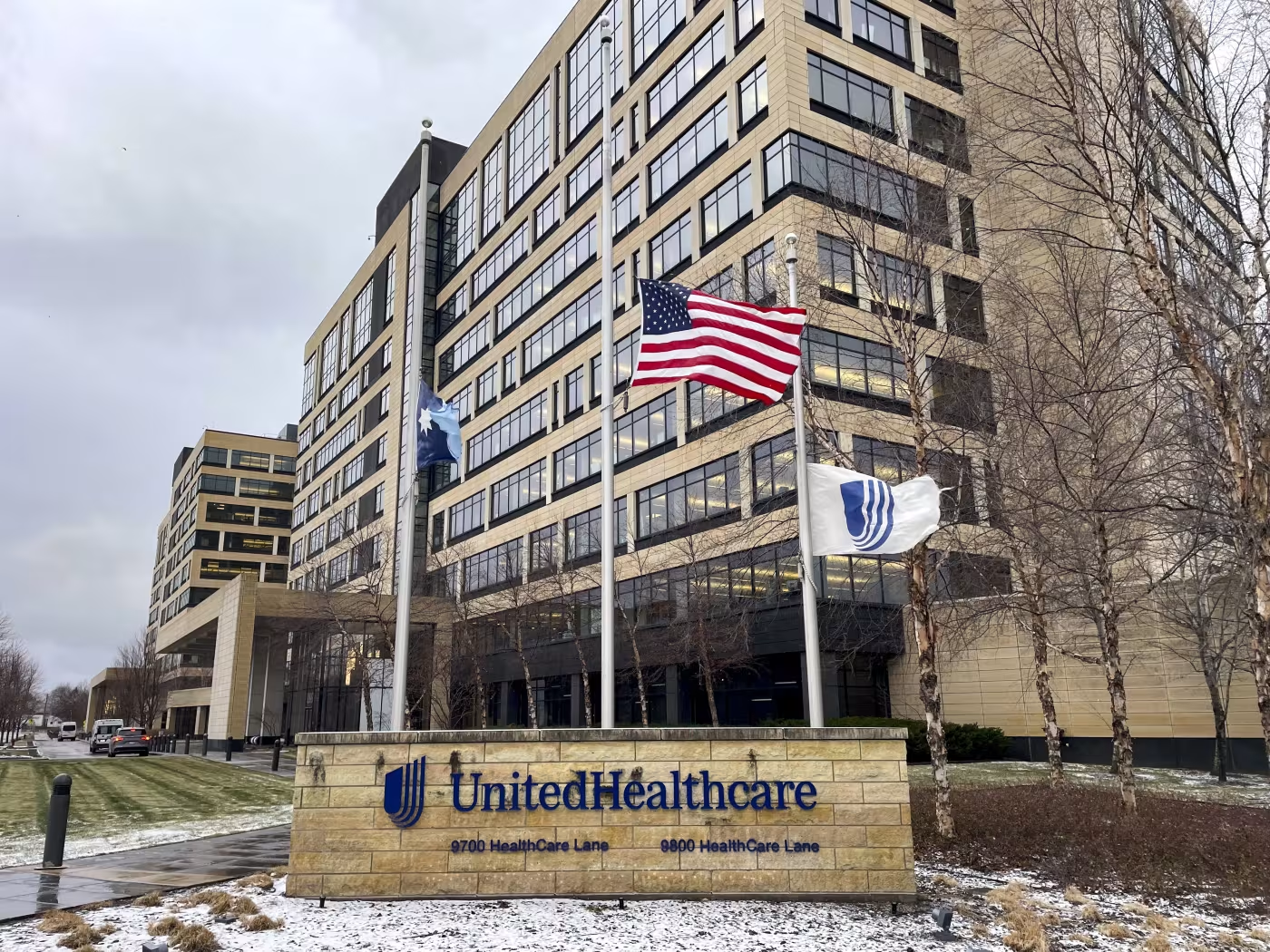Monday Report

From Washington, DC
- The Hill reports,
- “Top Republicans are signaling progress in government funding talks as leaders look to clinch a deal ahead of a looming Friday deadline.
- “House Appropriations Chair Tom Cole (R-Okla.) told reporters Monday that the “differences are narrowing” between all sides as they try to hash out the last significant funding deal in the divided Congress.
- “It’s both between the House and the Senate and Republicans and Democrats. So, they’re both institutional differences, and there are partisan differences,” Cole said. But he added “there are a lot fewer of them than there were 24 hours ago.” * * *
- “Pressed about the status of health care as leaders look to tie up loose ends in the CR, House Majority Leader Steve Scalise (R-La.) said Monday there are “big discussions on all of the remaining items.”
- “But we’re trying to get it wrapped up,” he said.
- “According to a source familiar, a package of key health policies is expected to be attached to the stopgap funding bill. It will likely include a two-year extension of telehealth flexibilities for Medicare, as well as an overhaul of pharmacy benefit managers’ business practices.”
- Fierce Healthcare adds,
- “Pharmacy benefit manager reform is included in a larger-than-anticipated healthcare package, but the PBM lobby is fighting the legislation at the eleventh hour.
- “Lawmakers appear to have agreed to a lame-duck healthcare package which, in addition to PBM reform, will include key program extensions.
- “As of last weekend, the package included an increase to the Medicare physician fee schedule of 2.5% for one year, bonuses to alternative payment models and a reauthorization of the SUPPORT Act for dealing with the opioid crisis.
- “PBM policies will be used as budgetary offsets. The legislation would ban spread pricing in Medicaid, ensure Part D plan sponsors delink PBM fees from the price of a drug and includes other transparency requirements.
- “The end-of-year health care package accompanying the Continuing Resolution has morphed into a massive 400-page bill that includes provisions that would undermine the role that PBMs play in lowering costs and providing choices for employers in the prescription drug marketplace,” said the PBM trade lobby, the Pharmaceutical Care Management Association (PCMA), in a statement Dec. 16. “The health care provisions included in the latest draft, as reported in the media, risk increasing costs for health plan sponsors, like employers and labor unions, patients, and families, and hiking up premiums for seniors.”
- One Digital informs us that “Congress passed the Paperwork Reduction Act and the Employer Reporting Improvement Act, each of which modify the ACA’s provisions on 1094 and 1095 tax form reporting. President Biden is expected to sign both acts into law, significantly altering ACA reporting requirements.”
- “The Paperwork Reduction Act amends the ACA by no longer requiring employers and health insurance providers to send tax forms to the covered individuals under their health plan. Previously employers and/or insurance providers had to send 1095-B/1095-C tax form to each covered individual showing proof of minimum essential coverage. Now, those forms must only be sent when requested by the covered individual. If a covered individual requests a form, the form must be provided by January 31 or 30 days after the date of the request, whichever is later. Employers and insurance providers must inform covered individuals of their right to request a form.”
- “The Employer Reporting Improvement Act codifies IRS regulations that allow for an individual’s date of birth to be substituted if the individual’s Tax Identification Number is not available. The Act also amends the ACA to incorporate IRS regulations allowing employers and insurance providers to offer 1095-B and 1095-C tax forms to individuals electronically.
- Additionally, and more importantly to employers, the Act requires the IRS to give large employers at least 90 days to respond to 226-J letters that issue a proposed employer shared responsibility payment. Previously, employers had only 30 days to respond. Finally, the Act establishes a six-year statute of limitations for collecting these payments.”
- The Plan Sponsor Council of America tells us,
- “The ERISA Advisory Council (EAC) voted on and approved 12 recommendations for the Department of Labor (DOL) to improve health insurance claim denials and related appeals. These reforms range from better oversight of AI determinations to requiring payouts for prior approvals.
- “Lisa Gomez, head of the Employee Benefit Security Administration (EBSA), described these proposed reforms today as “strangely and somewhat tragically timely, with the events of last week,” in reference to the killing of UnitedHealthcare CEO Brian Thompson in Manhattan on Dec. 4.”
- Due to the Affordable Care Act, ERISA appeal procedure changes embedded in regulations typically apply to FEHB carriers.
- The American Hospital Association News tells us,
- “The Department of Health and Human Services Dec. 16 published a final rule implementing certain provisions related to information blocking exceptions. The rule revises defined terms related to protecting access to care for purposes of the information blocking regulations.
- “The agency adopted select provisions first proposed in August as part of the much larger Health Data, Technology, and Interoperability: Patient Engagement, Information Sharing, and Public Health Interoperability (HTI-2) rule. The adopted provisions are designed to address concerns from patients, health care providers and other stakeholders regarding patient privacy, access to care, preferences for electronic health information sharing, and methods for achieving a balance between certainty and flexibility for entities involved in enhancing EHI interoperability and exchange.
- “The finalized “Protecting Care Access Exception” would allow entities to restrict EHI sharing under certain conditions to mitigate the risk of legal repercussions for patients, providers or care facilitators involved in lawful reproductive health services. The provisions will be effective immediately when published Dec. 17 in the Federal Register.
- “This is the second rule in less than a week containing policies originally included in the proposed HTI-2 rule. As such, additional provisions of the HTI-2 rule, including prior authorization application programming interfaces, United States Core Data for Interoperability Version 4 standards and public health interoperability requirements — which are currently under review by the White House Office of Management and Budget — could be published soon.”
- and
- “The Centers for Medicare & Medicaid Services Dec. 15 announced an extension to Dec. 18 for enrollment in federally facilitated marketplace coverage that begins Jan. 1. This applies to the 31 states that use HealthCare.gov for signups. Those consumers previously had until Dec. 15 to enroll for a full year of coverage. Individuals who enroll for 2025 coverage after Dec. 18 will have their plans begin Feb. 1. Individuals in Washington, D.C., and the 19 states that operate their own state-based marketplaces are advised to visit their state website for deadlines and effective dates for their coverage.”
- and
- “The Health Resources and Services Administration last week directed Sanofi to cease implementation of its 340B rebate proposal immediately and to inform HRSA of its plans no later than Dec. 20 in order to provide adequate notice to covered entities.
- “By way of this correspondence, HRSA provides warning that this unapproved credit proposal violates Sanofi’s obligations under the 340B statute, and HRSA expects Sanofi to cease implementation of it,” wrote HRSA Administrator Carole Johnson.
- “The letter says that the proposal, if implemented, would violate Sanofi’s obligations under the 340B statute and subject Sanofi to potential consequences, such as termination of Sanofi’s Pharmaceutical Pricing Agreement and civil monetary penalties.
- “In its Nov. 22 letter to 340B covered entities, Sanofi said it would be effectuating 340B discounts via the new credit model as of Jan. 6, 2025, for disproportionate share hospitals, critical access hospitals, rural referral centers and sole community hospitals.”
- Govexec points out,
- “The Office of Personnel Management is set to publish a final rule Tuesday that would finally implement provisions of a seven-year-old law aimed at reducing agencies’ ability to put federal workers accused of misconduct on prolonged stints of administrative leave.
- “In 2016, Congress enacted the Administrative Leave Act as part of the 2017 National Defense Authorization Act. The law tries to reduce agencies’ reliance on placing federal workers who are under investigation into employment limbo—paid but unable to work—for long stretches of time. It also updated the government’s policies on weather and safety leave.
- “Though OPM proposed regulations to implement all of the law’s provisions in 2017, only the provisions governing weather and safety leave actually made it across the finish line. But earlier this year, the environmental advocacy group Public Employees for Environmental Responsibility sued the HR agency seeking to force it to act.
- “In a final rule set for publication Tuesday in the Federal Register, OPM formally implemented the 2016 law’s restrictions on administrative leave. While the new rule will be effective Jan. 17, 2025, agencies have until October to comply with the new restrictions on administrative leave.”
In Food and Drug Administration news,
- MedTech Dive relates
- Zimmer Biomet received Food and Drug Administration clearance for a new stemless shoulder implant, called Osseofit.
- The implant is shaped to match the anatomy of patients’ humerus, or upper shoulder bone, while preserving as much of their healthy bone as possible in total shoulder replacement procedures. Zimmer announced the clearance on Friday.
- CEO Ivan Tornos highlighted stemless shoulder implants as a meaningful growth driver for the orthopedics company in an Oct. 30 investor call.
- Per Fierce Pharma
- “The FDA has blessed two previously approved medicines—one a cream and the other an injection—to treat atopic dermatitis (AD). Both products now will be available to a significantly larger patient population as roughly 26 million in the U.S. have the disorder, which is also known as eczema.
- “Organon’s Vtama, a topical cream originally approved for plaque psoriasis in 2022, is now cleared to treat AD, the company said early Monday. The nod came three months after New Jersey-based Organon acquired the product in a $1.2 billion takeover of Dermavant.
- “Similarly, the FDA gave a thumbs-up to Galderma’s Nemluvio to treat AD. The drug, a monthly subcutaneous injection, was previously endorsed by the U.S. regulator for prurigo nodularis.”
- and
- “After seven decades with no advances in the treatment of the genetic disorder classic congenital adrenal hyperplasia (CAH), Neurocrine Biosciences has scored FDA approval for its first-in-class, twice-daily oral medicine Crenessity (crinecerfont).
- “The blessing came nearly two weeks before its FDA target date and is termed as “paradigm shifting” by the San Diego-based company. The selective oral corticotropin-releasing factor type 1 receptor (CRF) antagonist can be used by CAH patients ages 4 and older.
- “Serving as an add-on to glucocorticoid replacement therapies, Crenessity reduces excess adrenocorticotropic hormone (ACTH) and downstream adrenal androgen production, allowing for glucocorticoid dose reduction.”
- Cardiovascular Business alerts us,
- “The U.S. Food and Drug Administration (FDA) and Boston Scientific today sent an urgent alert to patients and healthcare providers about the potential need for early device replacement of some Accolade pacemakers.
- The company announced a recall for a subset of its Accolade devices because of an increased risk of permanently entering the safety mode. This has limited functionality, making the device unable to properly regulate the heart’s rhythm and rate. Most of the activations have occurred during follow-up office or hospital visits when the devices are interrogated for data.
- There have been two reported patient deaths in pacemaker dependent patients after the devices went into safety mode in an ambulatory outpatient medical setting. Boston Scientific said about 70% of safety mode events occurred during in-office interrogations from a Latitude programmer, and the remaining incidents took place in an ambulatory setting.
- “The risk of harm may be greater when safety mode occurs in an ambulatory setting, as patients are not in a monitored clinical environment,” the company said in its recall notice.
- Beckers Hospital Review adds,
- “The FDA has recalled more than 233,000 bottles of antidepressant duloxetine, sold by Rising Pharmaceuticals, due to a potential cancer risk.
- “The recall, issued Dec. 5, was prompted by the discovery of a nitrosamine impurity, N-nitroso-duloxetine in the capsules which exceeds the FDA’s safety threshold.
- ‘The FDA has classified the recall as a Class II risk, its second most severe classification. The recall affects 233,000 bottles of duloxetine, which is used to treat conditions such as depression and generalized anxiety disorder.
- “The FDA also recalled 7,107 bottles of duloxetine capsules distributed by Towa Pharmaceutical Europe in October for similar concerns about nitrosamine impurities.”
From the public health and medical research front,
- MedPage Today reports,
- “CDC could not confirm what was suspected to have been the first H5N1 bird flu case linked to raw milk.
- “The patient, a child in Marin County, California, experienced fever and vomiting after drinking raw milk, as reported last week. The child initially tested positive for influenza A, with the local lab unable to find evidence of person-to person transmission between the child and her family members.
- “The State Laboratory and the CDC conducted additional testing, “but due to low levels of viral RNA, they were unable to confirm whether the influenza A virus present was H5N1 (avian influenza) or seasonal influenza,” according to the Marin County public health department.”
- The Washington Post tells us,
- “Nearly a quarter of U.S. adults reported living with chronic pain in 2023, according to a recent report from the Centers for Disease Control and Prevention.
- “Just over 24 percent (24.3 percent) of survey respondents said they experienced chronic pain either most days or every day, the CDC said, and nearly 9 percent of adults had “high-impact chronic pain” in the previous three months, meaning their pain frequently limited their life or work activities.” * * *
- “Chronic pain and pain that often restricts life or work activities, referred to in this report as high-impact chronic pain are the most common reasons adults seek medical care, and are associated with decreased quality of life, opioid misuse, increased anxiety and depression, and unmet mental health needs,” co-authors Jacqueline W. Lucas and Inderbir Sohi wrote in a data brief on the numbers.”
- Beckers Hospital Review adds,
- “In 2023, the United States saw a slight decrease in obesity prevalence among adults, according to research findings published Dec. 13 in JAMA.
- “Amid projections of increasing obesity rates over the next decade, researchers from Boston Children’s Hospital and Optum Life Sciences analyzed body mass index data from 2013 to 2023. The dataset included nearly 48 million BMI measurements from 16.7 million nonpregnant adults.
- “Between 2013 and 2022, mean population BMI and obesity rates rose annually. Both figures slightly declined in 2023, the study found.
- “The researchers suggested this change could be due to weight loss GLP-1s such as semaglutide (Wegovy) and “pandemic-associated demographic and behavior changes.”
- A recent National Health Statistics Reports shares characteristics of older Americans who fulfilled physical activity guidelines in 2022.
- The American Medical Association lets us know what doctors wish their patients knew about hand, foot, and mouth disease.
- MedPage Today notes,
- “Diets higher in inflammatory foods were tied to an increased incidence of dementia in older adults, longitudinal data from the Framingham Heart Study Offspring cohort showed.
- “Over 13 years of follow-up, higher Dietary Inflammatory Index (DII) scores averaged across three time points were linearly associated with an increased incidence of all-cause dementia (HR 1.21, 95% CI 1.10-1.33, P<0.001), reported Debora Melo van Lent, PhD, of UT Health San Antonio in Texas, and co-authors.
- “Similarly, higher DII scores were linearly associated with an increase in Alzheimer’s disease dementia (HR 1.20, 95% CI 1.07-1.34, P=0.002), the researchers reported in Alzheimer’s & Dementia. Findings were adjusted for demographic, lifestyle, and clinical covariates.
- “Although these promising findings need to be replicated and further validated, our results suggest that diets that correlate with low DII scores may prevent late-life dementia,” van Lent and colleagues noted.”
- To that end, Consumer Reports, writing in the Washington Post, discusses “four ways to reduce inflammation for better health. It’s thought to be an underlying cause of diabetes, heart disease and more. Diet and lifestyle can help you control it.”
- Per a press release,
- “The Institute for Clinical and Economic Review (ICER) today released a Final Evidence Report assessing the comparative clinical effectiveness of tabelecleucel (“tab-cel”®, Pierre Fabre) for the treatment of Epstein-Barr virus positive post-transplant lymphoproliferative disease (EBV+ PTLD).
- “ICER’s report on this therapy was the subject of the November 2024 public meeting of the New England CEPAC, one of ICER’s three independent evidence appraisal committees.
- “Downloads: Final Evidence Report | Report-at-a-Glance | Policy Recommendations
- STAT News reports,
- “Just over a year ago the PREVENT calculator to predict cardiovascular risk was released by the American Heart Association. It was acclaimed for improving on a 2013 model that didn’t take into account companion conditions such as kidney disease or type 2 diabetes, or include people from more diverse backgrounds.
- “PREVENT soon drew attention for its potential to reduce the number of Americans eligible to receive widely prescribed cholesterol-lowering statins, projected in two analyses published in June and July.
- “A less noted change was the addition of heart failure to conditions estimated by the risk calculator, alongside the traditional targets of heart attack and stroke. Heart failure is a serious illness that means the heart can no longer pump blood through the body as well as it should. It’s different from diseases that narrow blood vessels that feed the heart or brain.
- “Heart failure has no cure, making it more urgent to identify who’s at risk. PREVENT allows that risk to be estimated using information typically collected in a regular primary care visit.”
From the U.S. healthcare business front,
- Reuters reports,
- “Powerful weight-loss drugs are expanding use of U.S. health care as patients starting prescriptions are diagnosed with obesity-related conditions or take the drugs to become eligible for other services, health records and discussions with doctors show.
- “An exclusive analysis of hundreds of thousands of electronic patient records by health data firm Truveta found slight, but measurable, increases in first-time diagnoses of sleep apnea, cardiovascular disease, and type 2 diabetes within 15 days of an initial prescription for a GLP-1 weight-loss drug between 2020 and 2024.
- “In addition to obesity-related conditions, some patients are being prescribed the drugs to lose weight and become eligible for services, including organ transplants, fertility treatments or knee replacements, according to interviews with seven doctors and five other health experts.
- “This is a population that previously felt stigmatized by health care providers and often didn’t return. But now that they’re actually seeing themselves get healthier, asking clinicians questions and engaging more, I do think we’re seeing new patients,” said Dr. Rekha Kumar, a New York endocrinologist and obesity medicine specialist.”
- McKinsey and Company explore how the healthcare industry can weather current challenges.
- “The healthcare industry has been buffeted by a growing number of challenges over the past few years. This turbulence struck provider organizations in 2022, while payers were initially sheltered from the storm (Exhibit 1). But conditions became more difficult for payers in 2023, which has continued into this year, and there’s limited respite on the horizon. Unlike the widespread challenges the provider and payer sectors have faced, the picture for pharmacy services has been more nuanced. Some organizations have been propelled by tailwinds from pharmaceutical innovation and new delivery models, while others have battled headwinds from increased regulatory scrutiny. The healthcare services and technology (HST) sector, in contrast, has benefited from continued demand for data, analytics, and software. Along with pressures on earnings, the healthcare sector has also faced challenges in the capital markets, with deal activity in 2024 lower than 2023, according to McKinsey analysis.”
- Per the American Hospital Association News,
- “The AHA Dec. 16 released a collection of resources highlighting case studies, issue briefs, podcasts and videos to help hospitals and health systems integrate their physical and behavioral health services. These and many other sources of information can be found on the physical and behavioral health integration website.”
- “The AHA Dec. 16 released a collection of resources highlighting case studies, issue briefs, podcasts and videos to help hospitals and health systems integrate their physical and behavioral health services. These and many other sources of information can be found on the physical and behavioral health integration website.”
- Healthcare IT News tells us “74% of hospital leaders say virtual nursing will become integral to acute care. A nurse expert [in the article] discusses the results of a new survey from AvaSure showing that, while virtual nursing has yet to gain traction in acute inpatient care, it holds much promise – and already is showing results that benefit both nurses and the bottom line.”
- A recent National Health Statistics Report examines under age 65 enrollment in high deductible and consumer driven health plans in the U.S.
- Per HR Brew,
- “Despite a softening job market, US employers are expected to grant merit increases of 3.3% to non-unionized employees in 2025—the same rate as this year, according to a report by Mercer.
- “It’s not surprising to us to see employers really kind of keeping up with the part of what they had done in the prior year,” said Jack Jones, principal consultant at Mercer. “I think what it shows is employers are still prioritizing the investment in their talent.”
- “Next year, employers are expected to increase their total salary budgets—which includes money for promotions and adjustments to reach equity—to 3.7%, excluding unionized workers. The increase was 3.6% for this year. About one-tenth (9.3%) of employees are expected to receive promotions next year, compared to 8% in 2024.
- “However, Jones noted the numbers could change because only 20% of the more than 850 organizations surveyed had finalized their budgets. Still, most organizations (69%) don’t expect to adjust their initial projections.”







